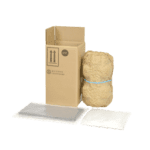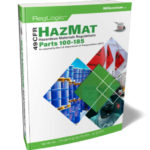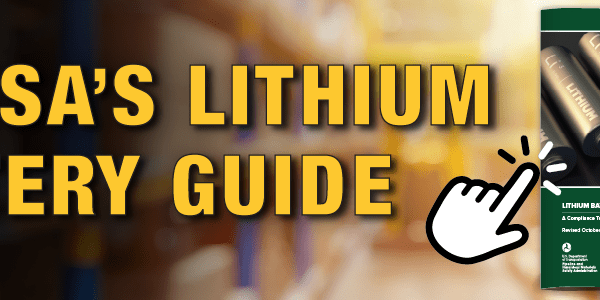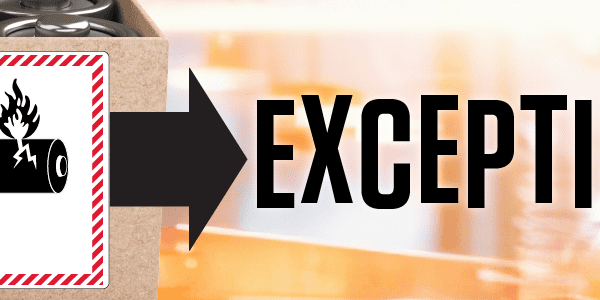Can I reuse UN Standard Packaging?
The short answer is NO.
In recent discussions with clients, I uncovered some “not so good” best practices I thought to share.
These customers all had one thing in common, they were receiving product from the manufacture in non-bulk fiberboard UN Packaging; then they would send the product out to their customers as required.
When the product arrived, they would remove the inner containers, cut the box down and place it in storage for later use. Don’t get me wrong, I am all about helping the environment by “reducing, reusing, and recycling,” just not in this situation.
What is wrong, you ask?
Even if the outer UN package was in immaculate condition:
- The shipper must assemble the package according to the instruction sheet provided. There is no instruction; so how on earth is it possible to do it right?
- The shipper must use the specified tape. How are they to know what tape was used? It is not possible to look at the previous tape and match it to specification.
- How does the shipper know that the original packer assembled it with all of the components? Perhaps an insert is missing?
- The shipper must retain the packaging instruction sheet for 90 days from time of shipment; how is that possible when they don’t have one to begin with?
The DOT regulations say this about the manufacturer/supplier of the packaging:
178.2(c)(1)(i)(B)
(i) Notify each person to whom that packaging is transferred –
(B)With information specifying the type(s) and dimensions of the closures, including gaskets and any other components needed to ensure that the packaging is capable of successfully passing the applicable performance tests. This information must include any procedures to be followed, including closure instructions for inner packagings and receptacles, to effectively assemble and close the packaging for the purpose of preventing leakage in transportation. Closure instructions must provide for a consistent and repeatable means of closure that is sufficient to ensure the packaging is closed in the same manner as it was tested. For packagings sold or represented as being in conformance with the requirements of this subchapter applicable to transportation by aircraft, this information must include relevant guidance to ensure that the packaging, as prepared for transportation, will withstand the pressure differential requirements in § 173.27 of this subchapter.
173.2(a)(4)(i) describes the responsibilities of the shipper
(i) For a DOT Specification or UN standard packaging subject to the requirements of part 178 of this subchapter, a person must perform all functions necessary to bring the package into compliance with parts 173 and 178 of this subchapter, as identified by the packaging manufacturer or subsequent distributor (for example, applying closures consistent with the manufacturer’s closure instructions) in accordance with § 178.2 of this subchapter.
(ii) For other than a bulk package or a cylinder, a person must retain a copy of the manufacturer’s notification, including closure instructions (see § 178.2(c) of this subchapter). For a bulk package or a cylinder, a person must retain a copy of the manufacturer’s notification, including closure instructions (see § 178.2(c) of this subchapter), unless permanently embossed or printed on the package. A copy of the manufacturer’s notification, including closure instructions (see § 178.2(c) of this subchapter), unless permanently embossed or printed on the package when applicable, must be made available for inspection by a representative of the Department upon request for at least 90 days once the package is offered to the initial carrier for transportation in commerce. Subsequent offerors of a filled and otherwise properly prepared unaltered package are not required to maintain manufacturer notification (including closure instructions).
Saving money is important to any company, but at what cost?
Penalties – Appendix A to Subpart D of Part 107
Failure to close a UN standard packaging in accordance with the closure instructions: $500 –$ 5,000.00
Offering a hazardous material for transportation in a packaging (including a packaging manufactured outside the United States) that is torn, damaged, has hazardous material present on the outside of the package, or is otherwise not suitable for shipment: $7,500.00.
Moral of the story. Ensure that you have UN standard packaging that has been tested for your product/container. Ensure that you have the manufacturer’s packaging instructions and use ALL specified components including the EXACT tape.
Need help? ICC has a variety of UN standard packaging options that meet the needs of every industry. Give us a call, what we do not have, we can help you create. Don’t take a chance, package it right from the start.
Stay up to date and sign up for our newsletter!
We have all the products, services and training you need to ensure your staff is properly trained and informed.
 Lithium Battery Shipping Kit |
|









 ICC USA
ICC USA ICC Canada
ICC Canada